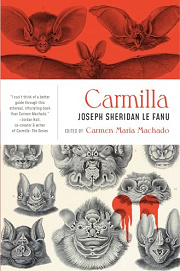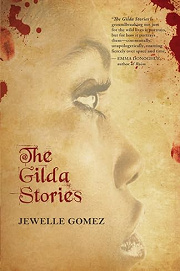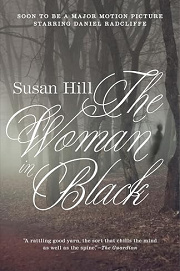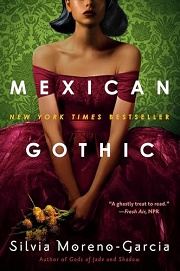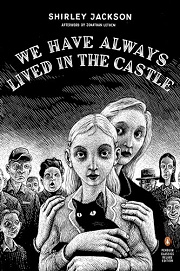Share your thoughts in a quick Shelf Talk!
Carmilla by J. Sheridan Le Fanu
"A lonely young woman welcomes a beguiling stranger into her secluded home—and soon finds herself entangled in a web of desire, dread, and night whispers. With moonlit corridors and velvet menace, Carmilla is the sensual, gothic vampire tale that laid the groundwork for a century of dark romance."
Have you read this book? Share what you liked (or didn’t), and we’ll use your answers to recommend your next favorite read!
Love Carmilla but not sure what to read next?
These picks are popular with readers who enjoyed this book. Complete a quick Shelf Talk to get recommendations made just for you! Warning: possible spoilers for Carmilla below.
In Carmilla, did you enjoy ...
... the seductive, transgressive intimacy between two women entwined with vampirism?
The Gilda Stories by Jewelle Gomez
If what gripped you in Carmilla was Laura’s dangerous attraction to the charming stranger who calls herself Mircalla, you’ll love how The Gilda Stories centers desire and companionship within vampirism. Like Carmilla slipping into the Styrian schloss after the staged carriage mishap, Gilda is drawn into intense bonds that blur comfort and predation. Across decades, her relationships echo the same alluring pull you felt when Laura clutched Carmilla’s hand during those moonlit conversations—only here the story follows the vampire’s perspective, turning that intimacy into a moving, queer journey of survival and love.
... piecing together a vampire mystery through diaries, letters, and reports?
Dracula by Bram Stoker
If you enjoyed how Carmilla unfolds through accounts—Laura’s recollections, the General’s tragic letter about his ward, and Baron Vordenburg’s learned notes—Dracula doubles down on that documentary feel. Journals, letters, telegrams, and even ship logs assemble a hunt for a blood‑drinker much as Vordenburg’s scholarship exposes Mircalla’s lineage. The thrill of connecting clues—puncture wounds hidden by lace, nightly visitations, a portrait revealing a true name—lands with the same chill as when Laura finally learns Carmilla is Countess Karnstein.
... a solitary narrator in an isolated house besieged by a single uncanny presence?
The Woman in Black by Susan Hill
If the tight focus on Laura, her father’s secluded estate, and the singular, disquieting guest who steals into her bedroom drew you in, The Woman in Black will scratch the same itch. Like Laura’s long, dim corridors and hushed drawing rooms where Carmilla sits too close, Arthur Kipps wanders an empty, fog‑bound house where one figure dominates the atmosphere. The way menace pools in parlors and on stairwells—as with Laura’s fainting fits and nighttime embraces—builds dread in an intimate space until a single presence rules every heartbeat.
... a creeping, atmospheric revelation of the house’s corrupt secret?
Mexican Gothic by Silvia Moreno-Garcia
If you loved how Carmilla takes its time—strange dreams, languor, the portrait of Mircalla, whispers of the Karnsteins—before unveiling the horror, Mexican Gothic delivers that same slow tightening of the noose. Noemí’s visit to High Place echoes Laura hosting a beguiling stranger: each scene deepens unease until the family’s rot and the house’s true nature are laid bare. The way affection curdles into entrapment recalls Laura’s hazy illnesses and Carmilla’s possessive tenderness—only here the revelation hits with a lush, delirious crescendo.
... an unsettling, confessional voice that traps you inside one young woman’s perceptions?
We Have Always Lived in the Castle by Shirley Jackson
If Laura’s first‑person account—her naiveté, her fascination with Carmilla’s caresses, her selective recall of events like the funeral procession and the midnight visits—kept you deliciously off‑balance, Merricat’s narration will enthrall you. Jackson locks you inside a mind as enveloping and skewed as Laura’s, where domestic rituals and intrusions from outsiders press in until the truth feels slippery. That intimate confessionality—so key when Laura swears she knows and doesn’t know Mircalla—powers this novel’s eerie hold.
Unlock your personalized book recommendations! Just take a quick Shelf Talk for Carmilla by J. Sheridan Le Fanu. It’s only a few questions and takes less than a minute.
